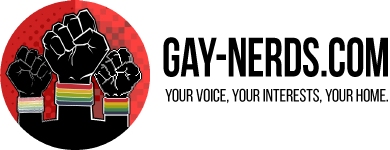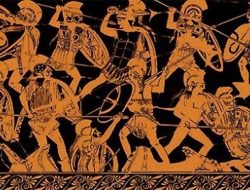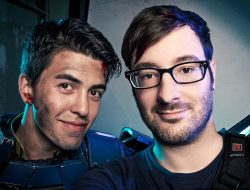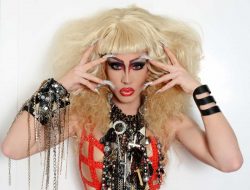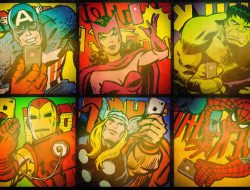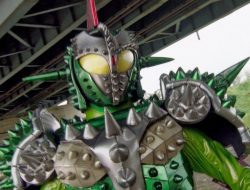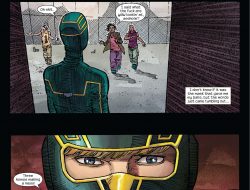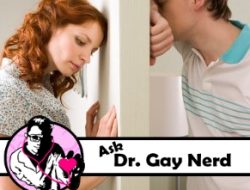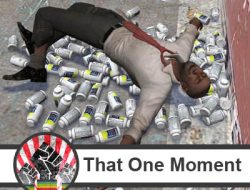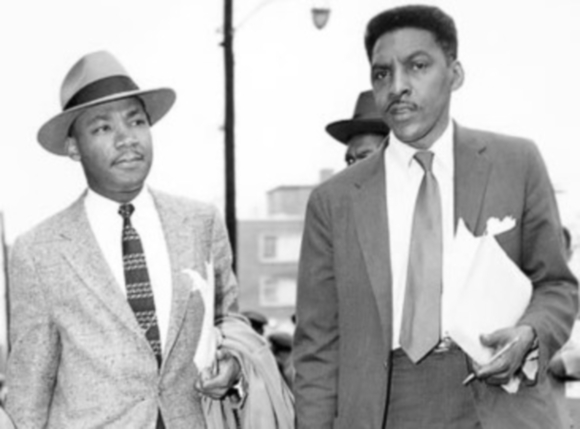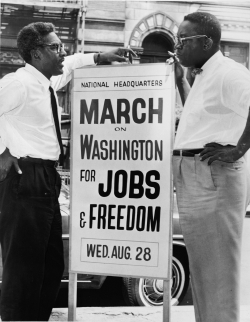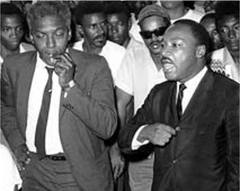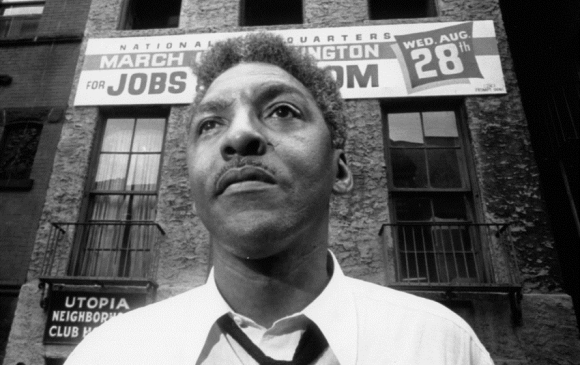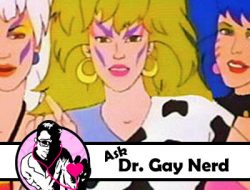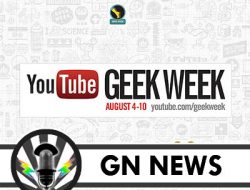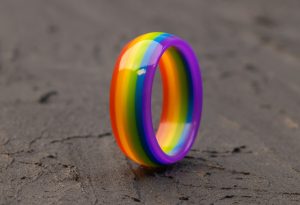One of the hardest things I had to deal with growing up gay was the sheer isolation I felt while doing so. I’m from a small Midwest town, was put through Catholic schools, and didn’t know a single gay person throughout all of my teenage years. I like to think I turned out pretty okay, but that doesn’t change the fact that this was the hardest period of my life.

It's a very intense time for young gays everywhere. It shouldn't have to be any harder than being a teenager naturally is.
There were absolutely no gay role models to even consider. Sure, you heard rumors of Michelangelo, Alexander the Great, or even of James Dean’s bisexuality creeping up in places… but these were never really acknowledged by authority figures and, in some cases, even flatly denied. The only people who were ever acknowledged of being gay were the ones you didn’t want to hear about, Dahmer or the like.
I’m a little bit of a history buff, however, and on my own pursuits of education, I’ve slowly discovered an astounding fact. History is absolutely filled with individuals who can be identified in some way as LGBT. Many of these people are individuals who you already know about… except for this important “secret.” Others have been completely buried in history because it’s simply too hard to separate their accomplishments from their LGBT orientation.
Naturally, the LGBT title can be a little tricky in some areas. The modern concept of sexual orientation is relatively new and the farther back in history one goes, the more fluid sexuality becomes. This does not change the fact that certain individuals throughout time had positive same-sex relationships which factored significantly into their lives. It also doesn’t change the fact that most of these people have been hiding Right Under Our Noses the entire time.
I hope this series will entertain and inspire some of you to take a closer look at history to see what other facts we may not have been told. I hope, most of all though, that this series can show an LGBT person of any age that they truly are not alone, they have never been alone, and despite whatever condemnations they have been given… they can still make an indelible mark on history.
-parchita
Bayard Rustin (1912-1987)
(I chose to start with Bayard Rustin because, out of my entire historical search, this individual surprised me the most. He was in incredibly active part of the Civil Rights Movement in the 1960s, acting as Martin Luther King Jr.’s right hand man for a while, and yet I’d never heard of him until I stumbled across his name. I hope he’s as inspirational to you as he was to me.)
Born in 1912 to a community that actively practiced segregation, Bayard Rustin was introduced to a number of differing customs and philosophies during his early years. His grandmother was a Quaker and through her, Rustin was first introduced to non-violent philosophies which played a very important role in his later activities. By high school, Bayard Rustin was integrated with his white classmates, although certain practices in his town were still kept segregated. This led to his first taste of activism as a teenager, when he organized non-violent protests against these practices.
Things with Rustin remained relatively quiet until the late 1930s, as by this point he had relocated to Harlem. From there, he was able to grow in his political philosophies as well as explore his identity as a gay man, for the relatively liberal environment of Harlem was more permissive and tolerant than nearly any other American location. During this time, he was involved with A. Philip Randolph (the famed labor leader), Norman Thomas, and other influential pacifists who played a very influential role on his future plans.
The 1940s brought about Rustin’s involvement with the Quaker Society of Friends, leading him into positions to tour the country speaking on peace, race relations, and disarmament. His pacifist nature, however, resulted in a refusal to join the army and Rustin spent 3 years in a federal prison during this decade. His activism was not subdued despite his surroundings during this time, though, as Rustin repeatedly protested the prison’s segregation practices.
Unfortunately, Rustin’s troubles with the law did not end after that period of incarceration, as Rustin was arrested a few times over the next decade for homosexual practices. That would prove to be a leading cause of why Bayard Rustin is a name that is largely unknown in today’s collective consciousness. Starting in 1955, Rustin began to request that his name be removed from all collaborations he took part in. He felt that criticizers of his work would be able to discredit the projects he was working on in the public view simply because of his arrests for homosexual behavior.
The Montgomery Bus Boycott was the launching point for Rustin’s heavy involvement in the Civil Rights Movement that eventually led him to Dr. Martin Luther King Jr. His past involvement with influential social leaders such as Randolph and Thomas provided him the experience he needed to be a strong leader and the pacifist ideologies learned from his grandmother and the Quaker tradition pushed him into a perfect position for aiding the Movement.
Working with Dr. King, Rustin helped to organize some of the most important demonstrations during the Movement, including the 1957 Prayer Pilgrimage for Freedom and the 1963 March on Washington For Jobs and Freedom, where Dr. King delivered his famous, “I Have a Dream,” speech. Rustin’s contributions did not stop with mere organization, however, as his close involvement with Dr. King put him into the position of drafting both speeches and articles that Martin Luther King Jr. ended up delivering.
After the passage of civil rights legislation and the assassination of Dr. King, Rustin still remained heavily involved with civil rights, although his focus slowly started to be focused elsewhere. His interest in international politics grew and he became very focused on helping refugees and protesting the Vietnam war. As an out gay man, Rustin also spoke a great deal in support of the gay rights movement.
Although he died of heart failure in 1987, Bayard Rustin left an indelible mark on both the African American civil rights movement and the gay rights cause. Only a year before his death, Rustin commented that, “The barometer of where one is on human rights questions is no longer the black community, it’s the gay community. Because it is the community which is most easily mistreated.”
His willingness to take a backseat all but guaranteed that Bayard Rustin hasn’t gotten most of the credit which he deserves for his bravery and hard work toward equality. He’s someone who we all should know about but only few of us do. In my eyes, no one is more perfectly suited to lead the pack of Right Under Our Noses.
Like this article? Discuss it in the forums!
Tags: activist, Bayard Rustin, black community, civil rights, civil rights movement, dr martin luther king jr, gay community, gay hero, gay rights, gay rights movement, gay role model, gay-nerds, history, I Have a Dream, inspirational, lesbian nerds, peaceful demonstrator, pride, Quaker, Right Under Our Noses, Society of Friends, writer
